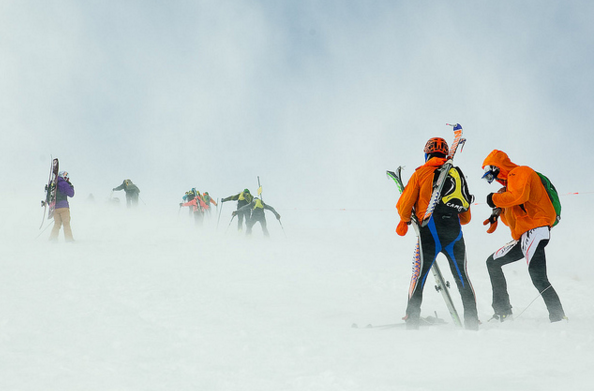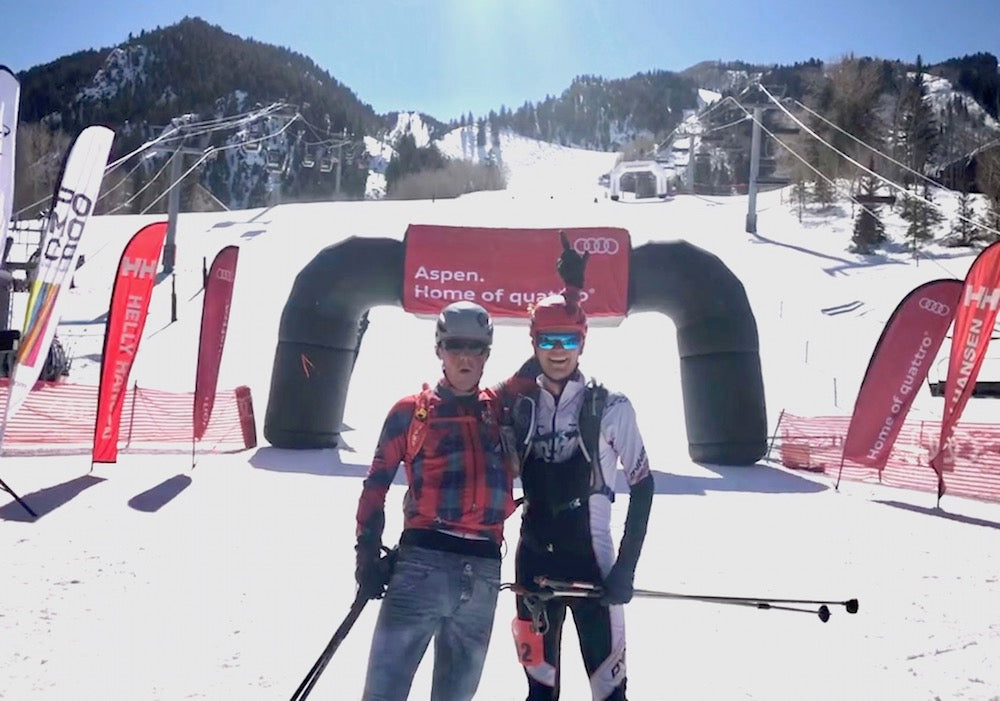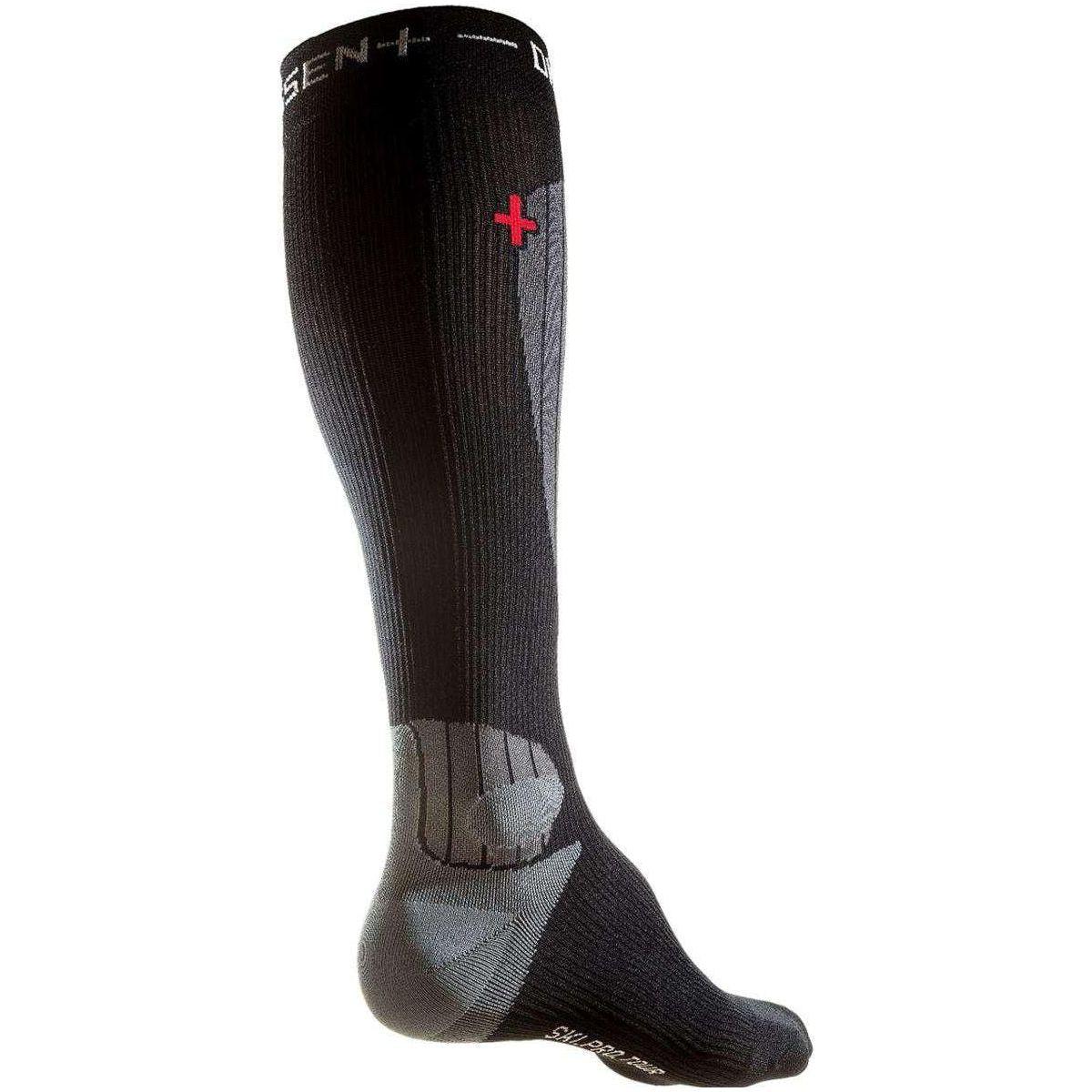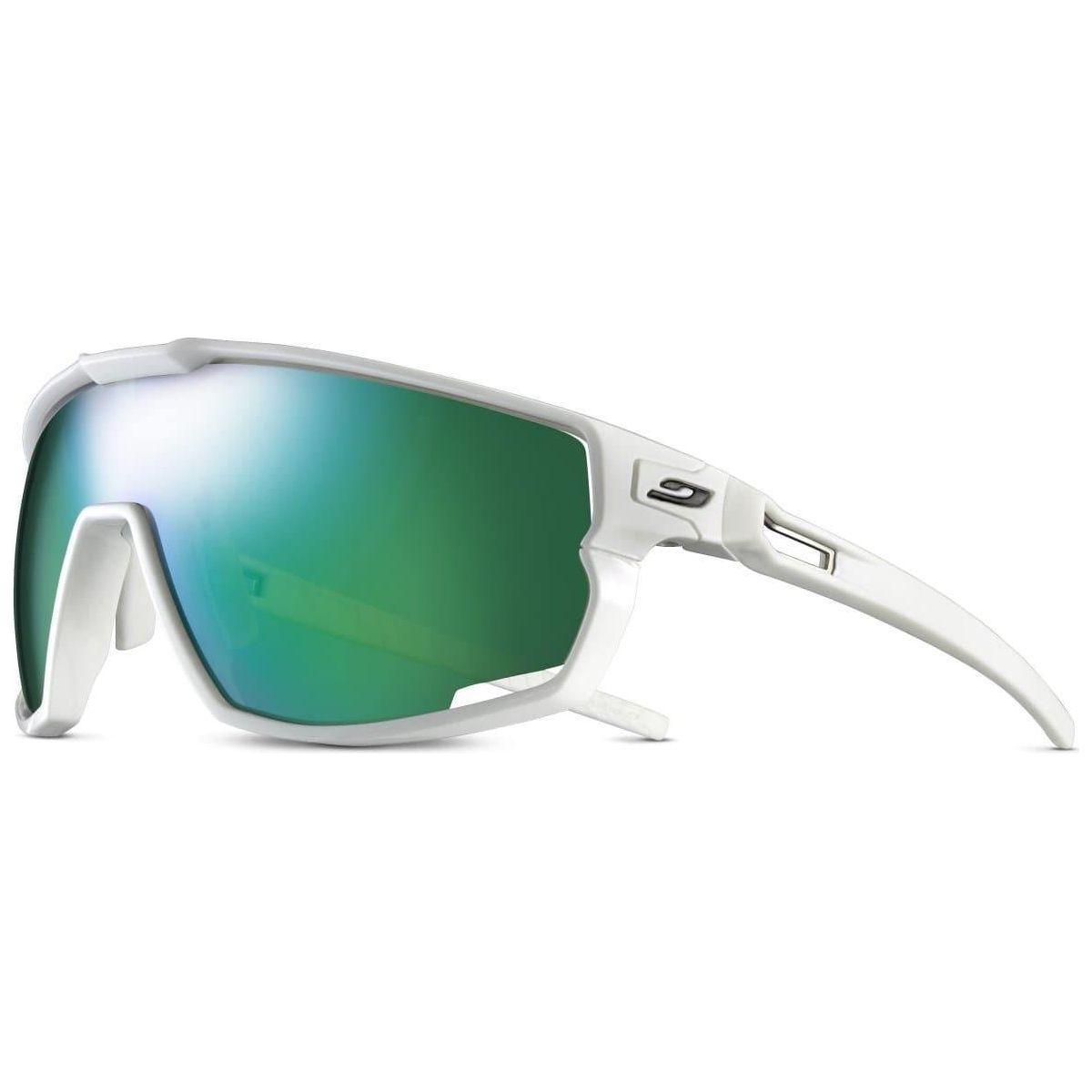
How to Prepare for the Power of Four Ski Mountaineering Race
The Aspen Snowmass Audi Power of Four is one of the biggest ski mountaineering races in the United States. Each year, it draws hoards of spandex clad, skinny-ski adorned, exercise-food-tolerant athletes from all over the state and country. The course starts at Snowmass ski area, traverses to Buttermilk, climbs the steep Highlands resort, and finishes on the historic Aspen Mountain. It's an arduous route on challenging terrain that oversees the striking Elk Mountains––what more can you ask for?
Click here for more information about the race
If the Power of Four isn't already on your bucket list, it should be. Grab your trusted ski partner and challenge yourselves to this incredible skimo race that traverses all four ski resorts around Aspen, Colorado. In celebration of this annual sufferfest, here is a mashup of old and new race preparation tips from OG PO4 devotee Doug Stenclik in 2016 and relative novice me, Slator Aplin, in 2021.
Doug's First Power of Four Recap


Here's an account of Doug's first Power of Four way back in 2012 with none other than business partner and long time friend Randy Young:
In 2012, I faced gale force winds and frostbite on top of Highlands Bowl with my now business partner Randy Young, only to descend from Highlands and start a sunny shirtless climb to the music from the speakers in my backpack for the climb up Midnight Mine. In this race, I was little more than an elevation tourist returning from a three-year hiatus away from the valley while living at sea level in Portland, Oregon. Although this was my first time on the Power of Four course and first real rando race, sometimes I think this was the year that my execution of pacing and nutrition was the best.
Doug's PO4 Tips & Tricks
Doug went on to race in the PO4 every year since, savoring the annual beatdown that this exceptional course delivers. He's now in his second decade of racing it. That's some serious race experience. Here are some of his lessons learned and insider tips and tricks:
- Register early - This little psychological trick gets you prepared better than you think. The race becomes real and training becomes mandatory. I have seen many friends wait until that last week and be scrambling for gear that should have been prepared months previously.
- Get out on the light gear - This doesn’t mean you can’t be on your favorite fat skis or avoid riding lifts at the mountain, but skinny skis change the pace of the sport and the pacing of your legs. It’s easy to go out too fast, but 25 miles and 12,000' of vertical gain is a lot of steps even if you were just in running shoes.
- Get your long tours in - Rather than spend every day cruising up one or two laps on the resort, prove to yourself that you can go the distance. Unlike running a marathon, ski touring has little impact and is way nicer on your body. You can keep those feet trudging for a long time, but the confidence you gain from knowing you can suffer for over 6 hours will be your friend on race day.
- Keep eating - I think at my solid midpack pace, the enjoyment of the race is directly proportional to how many calories I have taken in. Practice what you eat and eat what you enjoy. That 12th espresso GU of the day is never as good as it sounds. Trust me. Try out different race foods during training to see how your body reacts to the calories.
- Practice towing – Even among top men’s team using the towing tether can keep both partners going strong. However, it is easy for the partner feeling stronger to yank the other out of their comfort zone. It’s a long race pace wisely. But don't underestimate the power of the tow.
- Familiarize yourself with the Course - If you live close by, get out on the Congo Trail and see what its like to ski a sketchy, icy mountain bike trail, and where you can refuel in between the steep Highlands climb. If you don’t live locally, get the beta and check out some maps and elevation profiles. Familiarity lets you know how to pace and gives you the confidence when you are ready for what’s next.
Nothing can replace good training, but preparation and pacing on race day can help. The Power of Four is growing in popularity with athletes flocking over from many sports. Most of all this race is an incredible way to push yourself farther.
An Amateur Athlete's First PO4 Recap


The winter of 2019/20 was my first season of skimo training and racing. I learned to ski at the ripe age of two or three, and picking up a new style of skiing was a rich and rewarding experience. Skimo skis are hard to manage, sub-kilo race boots are glorified carbon slippers, and randonee race suits are...tight. The skiing style that comes with ultralight race equipment requires relearning body movement and skiing techniques. I savored the learning curve and found the light and fast travel that comes with skimo kit to be novel and engaging. The comparison that I set for skimo equipment is that it's the trail running of winter. Backcountry touring equipment is similar to a sturdy pair of hiking shoes (or hiking boots if you opt for an 'All-Mountain' or 'Freeride' kit). Trails in hiking shoes cruise by at a slow, thoughtful pace - the same goes for a skin track on backcountry ski equipment. With skimo equipment, you are running over snow - both up and down - as if on a summer trail run. It's a fluid, fast, and featherweight effort that allows terrain to flash by.
I teamed up with my close friend Mason Osgood to compete in the Tellurando and Power of Four. We didn't set any expectations for our performance. The primary goal for the season was to learn as much as possible during our introduction into the sport. Because of our early registration (thanks Doug for the tip), we always had a reason to take an extra lap or go out after work for fitness touring on the resort. That mid-season race schedule prompted us to log longer tours and opt for weekly [sadistic] interval trainings. I wouldn't have skied as much as I did last season if it wasn't for these skimo races looming in the near future. I loved that external motivation.
These two races turned out to be a win-win for my backcountry skiing: I skied much more during early winter. Then come springtime, skimo season was over and I was fitter than ever before. I coasted my skimo fitness through April and May, making big ski missions even bigger with my new found endurance built from the race skis.
Slator's Skimo Tips and Tricks


It's now my second season of skimo training. I'm more jazzed than ever to push personal limits, gain aerobic fitness to translate to backcountry skiing, and compete against friends in this year's lineup of ski mountaineering races. With the introduction of my second season of all things skimo, here is a list of Slator's First Season of Skimo Training Lessons Learned:
- Embrace the Process: Learning how to ski on skimo skis feels like learning how to ski all over again. Especially with the lightweight, light flex boots. Embrace the process of learning a new sport. It's a challenge that's fun to practice and improve in.
- Practice Anaerobic Touring: If you are interested in competing in skimo races like the Power of Four, practice skinning uphill at an uncomfortably fast pace. This is best practiced with interval and threshold training. The majority of training is most effectively spent cruising at an aerobic pace to build a base of endurance fitness, but to tap that ceiling higher, it's a great idea to sprinkle in fast and furious sessions of anaerobic training. If you want the creme de la creme of skimo training, check out the Uphill Athlete SkiMo program. They will explain the terms aerobic, anaerobic, and set you up for a season of effective and sure-to-be-successful skimo training.
- Savor Resort Night Skinning: Skimo gear expands the world of resort fitness touring into a whole new dimension. If you are limited for time due to work, it's challenging to get out backcountry skiing. Most resorts have tolerate uphill touring policies that allow one to ski outside of operating hours. Be sure to check your mountains particular policy before heading out. Resort touring is a friendly option for building uphill fitness without the need for a ski partner, avalanche equipment, or local terrain knowledge. I encourage you to explore your local resort through the lens of uphill touring [while always adhering to resort uphill policies]. It will let you experience resort skiing from a completely different perspective.
- Build Community: Find friends that also like exercise and active outdoor pursuit. It's a lot harder to bail on your afterwork ski plans if you are held accountable by your training partner. You can build relationships/friendships/mentorships through uphill training. Organize weekly resort tours, share training schedules, or plan a romantic lung-busting interval training date with that special someone ;) . Build community around skimo racing and training so 1. You aren't training alone all the time and 2. You foster new relationships through this shared interest.
That's my unsolicited, limited-experience-based advice on how to better enjoy the process of ski mountaineering racing and training. Skimo is an ever expanding segment of the ski industry, so jump on board! It's a fun new lens to explore the sport of skiing and push personal limits. Book an appointment with us at Cripple Creek Backcountry to get set up with your new training kit. After that, sign up for next year's Power of Four skimo race. See you there!



